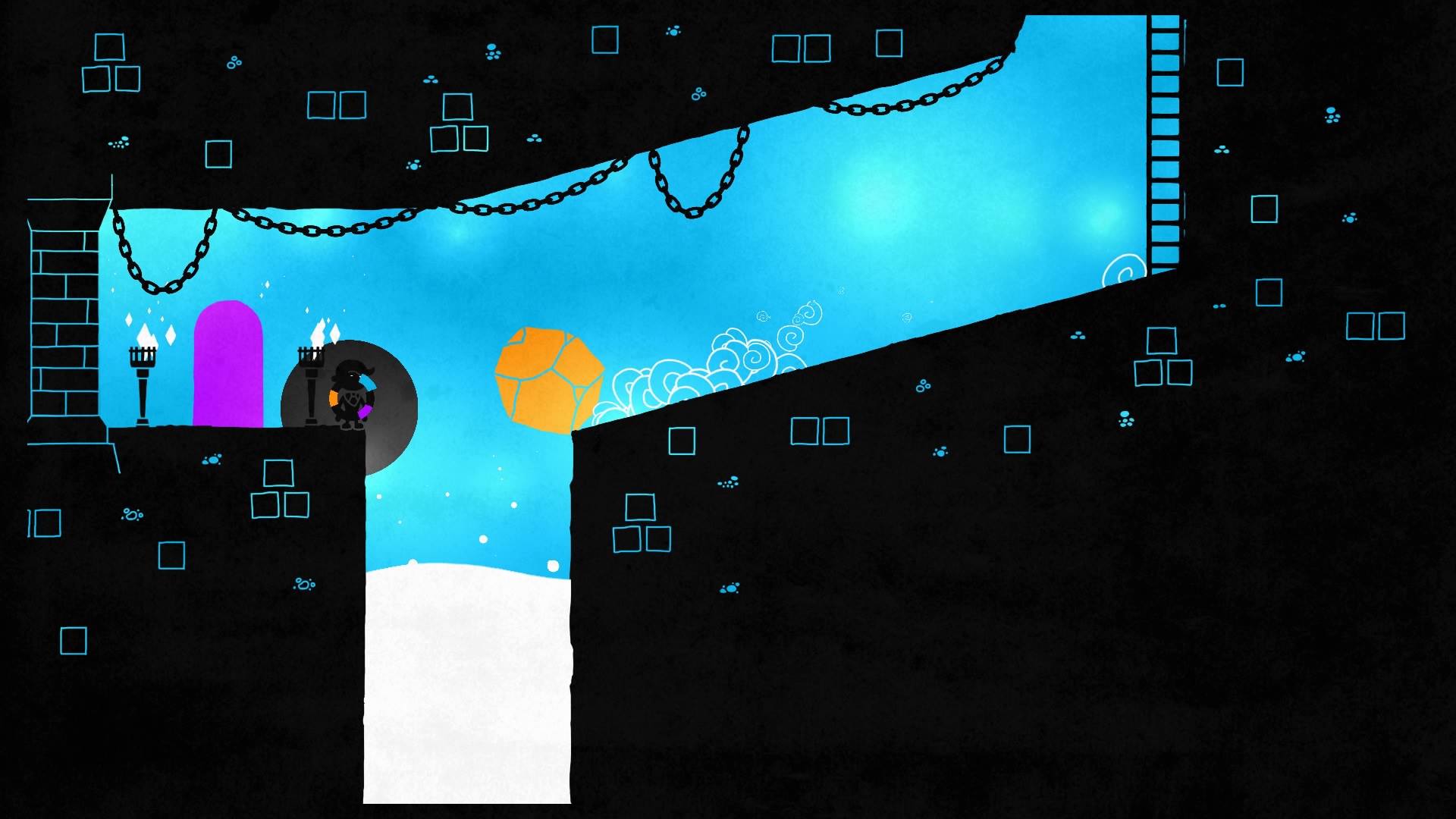Story driven platformer games are all over the place in the independently developed video game market. What seemed to start with Limbo back on the Xbox 360 and such has slowly evolved with various mechanics driving the game. Hue is one of those games, a puzzle filled platformer that plays with color, player perception, and logic patterns. Created by Fiddlesticks, Hue seeks to wow its audience with a relaxed adventure through a world devoid of color. Only our hero can bring back the colors, slowly building a palette from which the brush of change is cast. How does Hue compared to the cornucopia of indie platformers available?
For starters, Hue is a crisp looking game, as it should be given its theme. The colors pop and transition from shade to shade smoothly, making for a visually appealing art style. Calm tunes permeate the game, creating this relaxing journey through this simple world. As it is a platformer, there is a lot of running about, jumping on things, and pulling blocks to reach areas. However, where Hue defines itself is the hero’s ability to change the background of the world by pointing to an acquired color on a wheel with the right analog stick. Throwing up this menu slows down time and releasing it pops the chosen color into existence. This removes objects of the same hue, allowing the player to walk through obstructions or dodge boulders.
This mechanic is what the game’s puzzles are built upon, as each stage proposes some sort of challenge involving switching colors at the right moment or in the right place. Hue does a fairly good job of making each stage blend into a realized world, unlocking different areas as new colors are acquired. Getting more colors, in turn, makes the puzzles more complex. Adding that extra step into solving each area does keep things from becoming stale, yet there were few moments when these skills were truly challenged. Most of the game is simple enough to breeze through, with the occasional point of frustration in the puzzles, but we’ll touch on that later.
Hue’s story is delivered through brief cutscenes of text between characters. While most of the game focus on exploring and puzzle solving, these little tidbits of the world’s story fill up the empty space between zones or longer waling segments. Many of the game’s ideas are conveyed through notes on the ground, which prompt a voice over. These readings are well-written and spoken by a woman with an amazingly soothing voice. Needless to say, I’d love for that voice actress to read me a bedtime tale. The whole approach to storytelling does remind me of Song of the Deep, which was interesting for a bit, but did eventually drone on only to remain an interesting notch in Insomniac’s belt.
Here is where we come to Hue‘s most fatal flaw, the control scheme. Changing colors is easy enough with the right analog stick. Moving the character can be done with either the directional pad or the left analog stick. Jumping is the usual ‘X’ button. While this seems simple enough, there are several moments in the game in which the player has to jump and select a color in mid-air, creating this awkward reach for the thumbstick while jumping. Now, a solution to this would be to change the jump button to the shoulder buttons, to keep the players thumbs on the sticks at all times, but there is no way to change this in the game’s options. This single poor control choice actually makes a lot of easy to pull off maneuvers way more frustrating than they should be, ruining the flow that the game does fairly well to establish.

This section would have been so much better if the jump button was mapped to the shoulder buttons. . .
Hue is a game that is cute enough. It has its charm with its art style and themes and the gameplay is simple in a way that it is accessible to many players. However, it just doesn’t seem to do anything substantial. This is a game I can see myself beating in an evening and never touching or speaking of again. Today, people are still talking about how interesting Limbo was at the time of its release, being a game that got several players into indie games as a whole and sparking a movement of bringing indies on consoles. Hue is a game that has some interesting ideas, but falls under the category of easily forgotten games, trapped in the tropes established by other indie titles.
Hue is available on the PC, PS4, and Xbox One. A Vita version is in the works as well.









